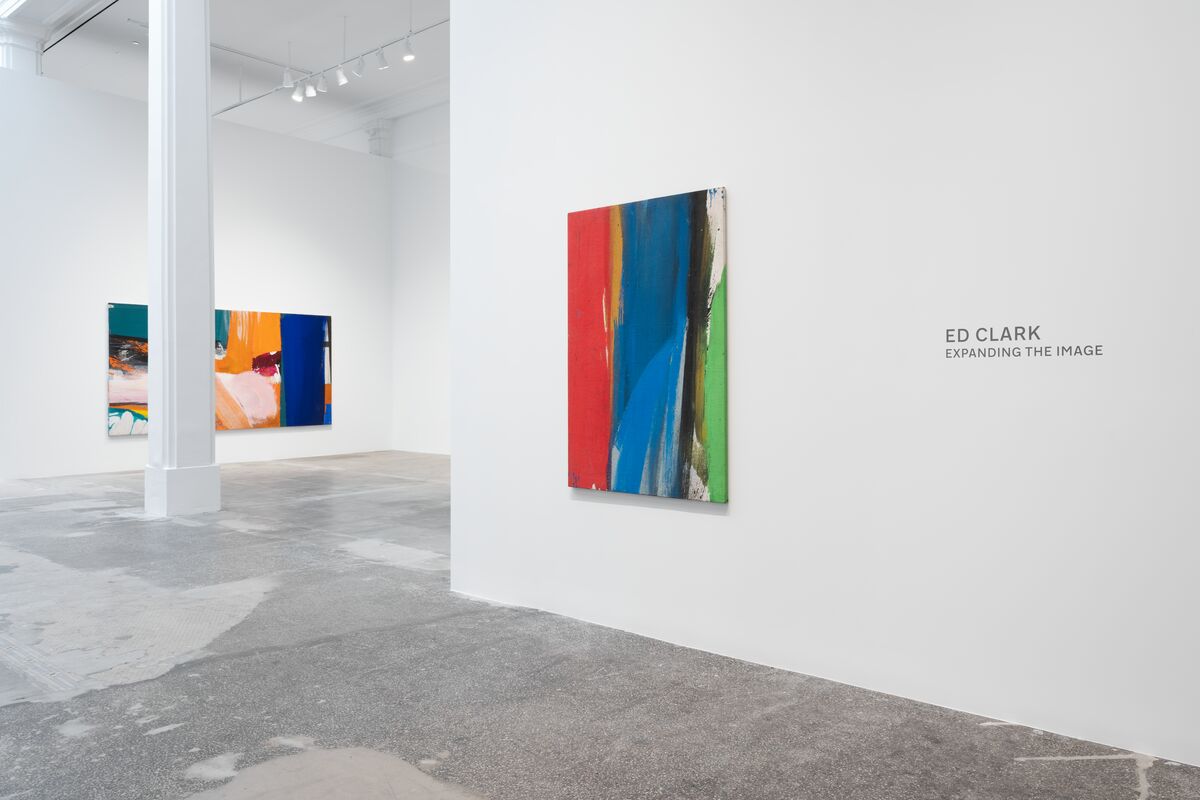Ed Clark “Expanding The Image” marks the first time Hauser & Wirth has shown the abstract painter’s work at their Los Angeles location. The exhibition consists of Clark’s formative work from the 1960s and 1970s, and complements an exhibition Hauser & Wirth held at their New York gallery in September 2019, which featured work Clark completed toward the end of his life, just before his passing in October 2019.
The early period featured in “Expanding The Image” is what the artist referred to as his breakthrough, “the big sweep,” that he discovered in 1956 while living in Paris. Ed Clark was an avid experimenter, credited as the first American artist to use shaped canvases in an exhibition and the first artist to use a push broom. Locomotion (1963) is quintessential of his work in the 1960s: high texture, solid, blocky primary colors, and emotive, guttural, and gestural movement.

Ed Clark, Locomotion, (1963). ©The Estate of Ed Clark. Courtesy of the Estate of Ed Clark and Hauser & Wirth
In the 70s, Clark’s color palette, medium, canvas, and certain aspects of the methodology evolved. We see this in Integrated Oval #1 that Clark is using acrylic paint instead of the oil paint he used in the 1960s, granting texture and coverage more affordably with a controllable shape. However, the slight evidence of a burnt sienna underpainting coupled with its “squint” quality, shows he didn’t completely abandon techniques from his oil practice. We also notice the use of artist’s tape to achieve blank space both horizontally and elliptical. The addition of space among the blue, brown and pink tones — to someone like me that was born and raised in New Mexico — appear to draw from the pouring sand technique of the Pueblo Tribe in Southwest America, which his website confirms was an influence.

Ed Clark, Integrated Oval #1, (1972). ©The Estate of Ed Clark. Courtesy of the Estate of Ed Clark and Hauser & Wirth
In Silver Stripes, we see even more innovations with the addition of an airbrush technique that creates a sort of three-dimensional effect, raising the ellipse from the canvas. Clark thought painting in the shape of an ellipse was much more faithful to how the human eye viewed the world than squares, stating that he was “interested in expanding the image.”
Ed Clark “Expanding the Image”
Hauser & Wirth Los Angeles
August 22, 2020 – January 10, 2021



















0 Comments